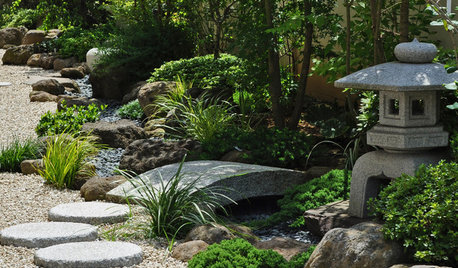all,..
I read this on the plane, a short read, yet a very very good read, easy to understand, clearly laid out with explanations about the example gardens, etc., and definitely a book I look forward to reading again whenever I feel bogged down by the 'traditional, one way only approach' of the Japanese garden art.
Its focus is the dry garden, karesansui.
Has anyone else read it?
Mirei Shigemori: Modernizing the Japanese Garden by Christian Tschumi
Stone Bridge Press, ISBN 1-880656-94-9
I am tempted to add this to the must have list, and if a followup came out I would be very intrigued by it as well.
The intriguing part to the book is that gardeners have been heading in this direction; expressing tradition while applying more functional modernity to their compositions due to the needs of current/future living constraints. Practicality at its finest, with some excellent quotes within...
This book will leave you thinking.
-and thinking about why Mirei Shigemori would be disapproved of by the JoJG, when the modern applications of garden are so well brought out...?
edzard




Archer55
edzardOriginal Author
didgeridoo
chris74robinson
Lee_ME
nachodaddy
Lee_ME
keithnotrichard
edzardOriginal Author
chris74robinson
Niwashisan
nachodaddy
chris74robinson
Herb
nachodaddy
Herb
Floyd7
nachodaddy
Herb
Archer55
edzardOriginal Author
Herb
edzardOriginal Author
keithnotrichard
Herb
inkognito
Herb
inkognito
Herb
gerald
edzardOriginal Author
Lee_ME
Herb
edzardOriginal Author
Herb
edzardOriginal Author
edzardOriginal Author
Lee_ME
Herb
Herb
inkognito
Lee_ME
DonPylant
gerald
Herb
Lee_ME
ron_s